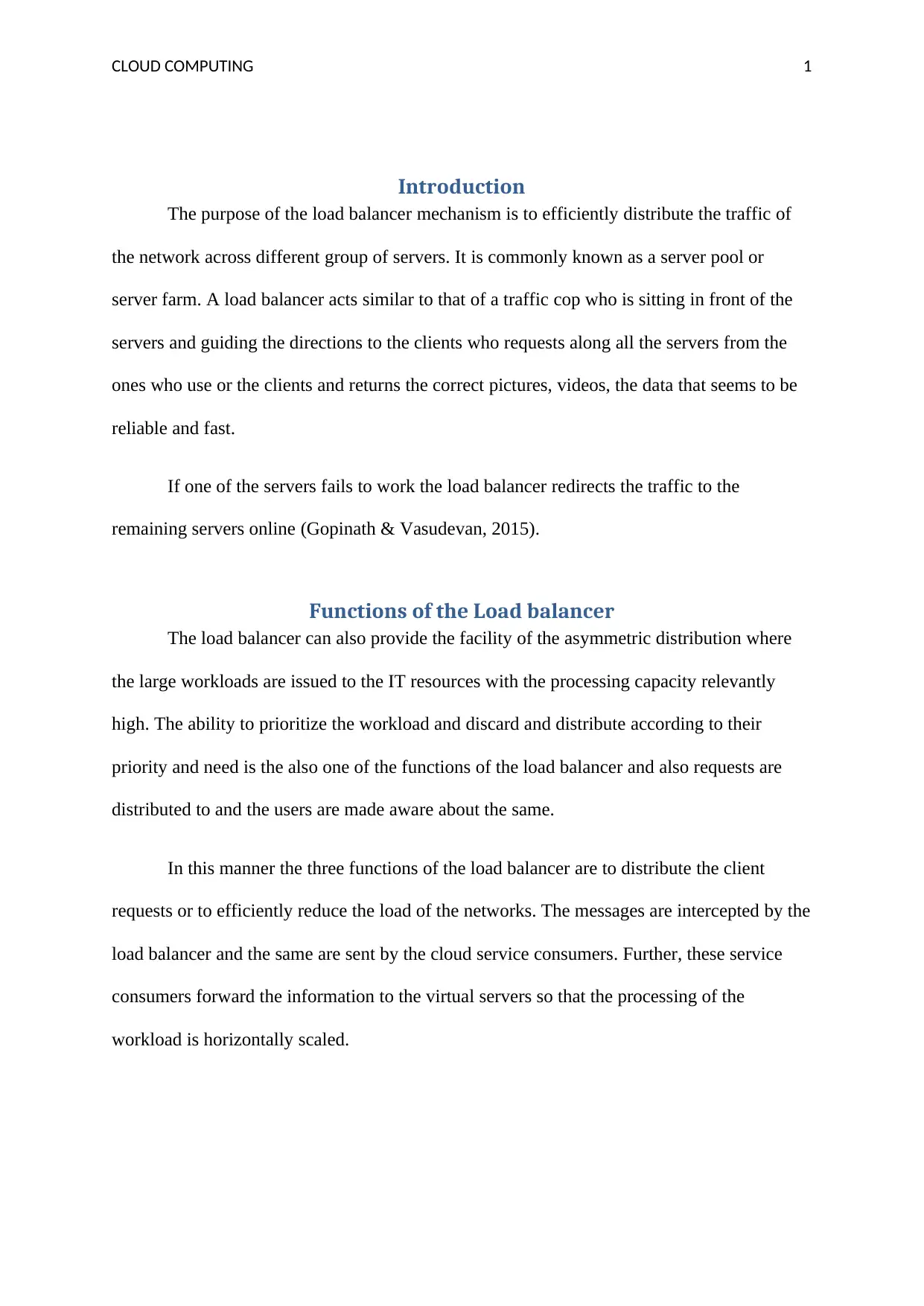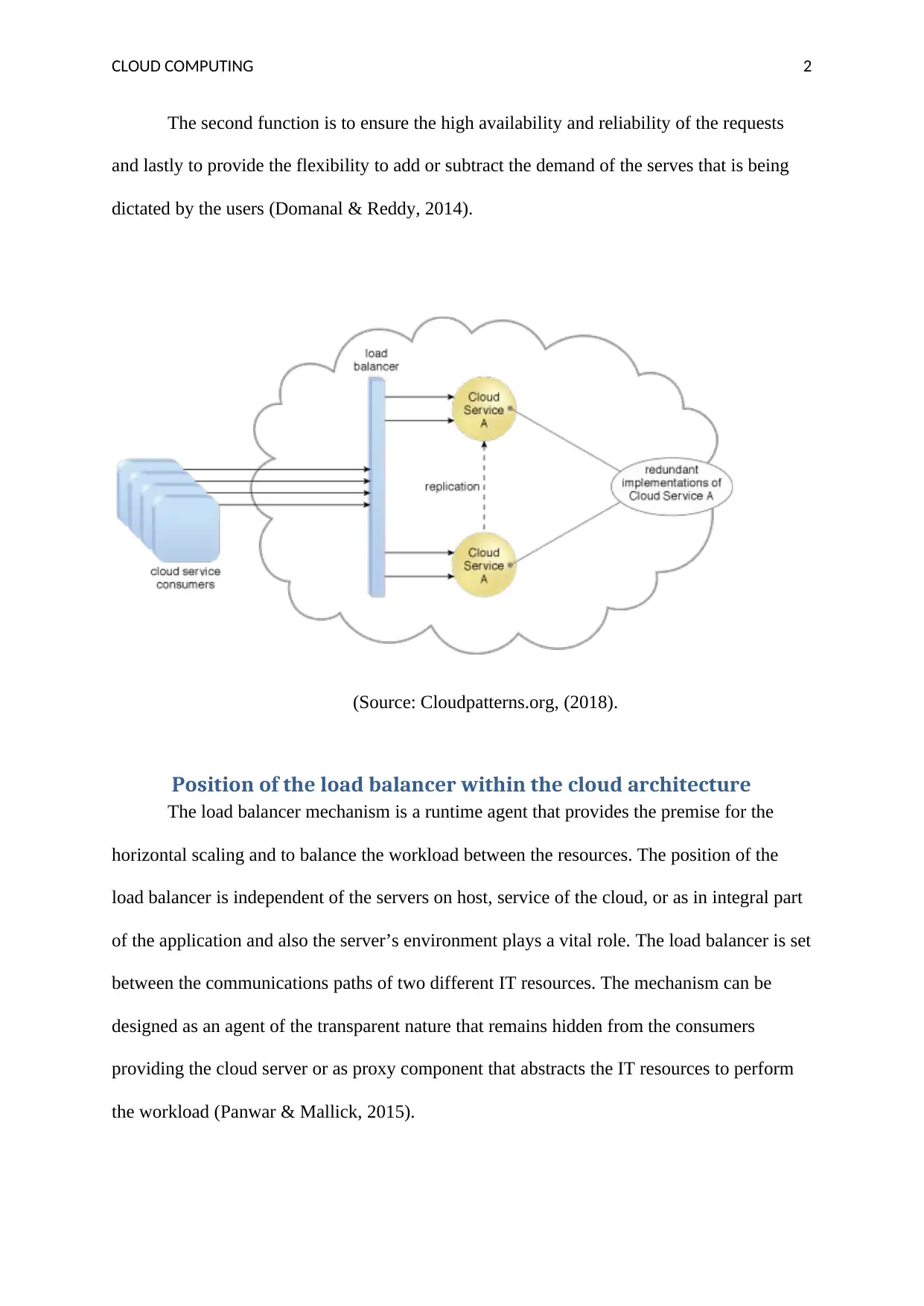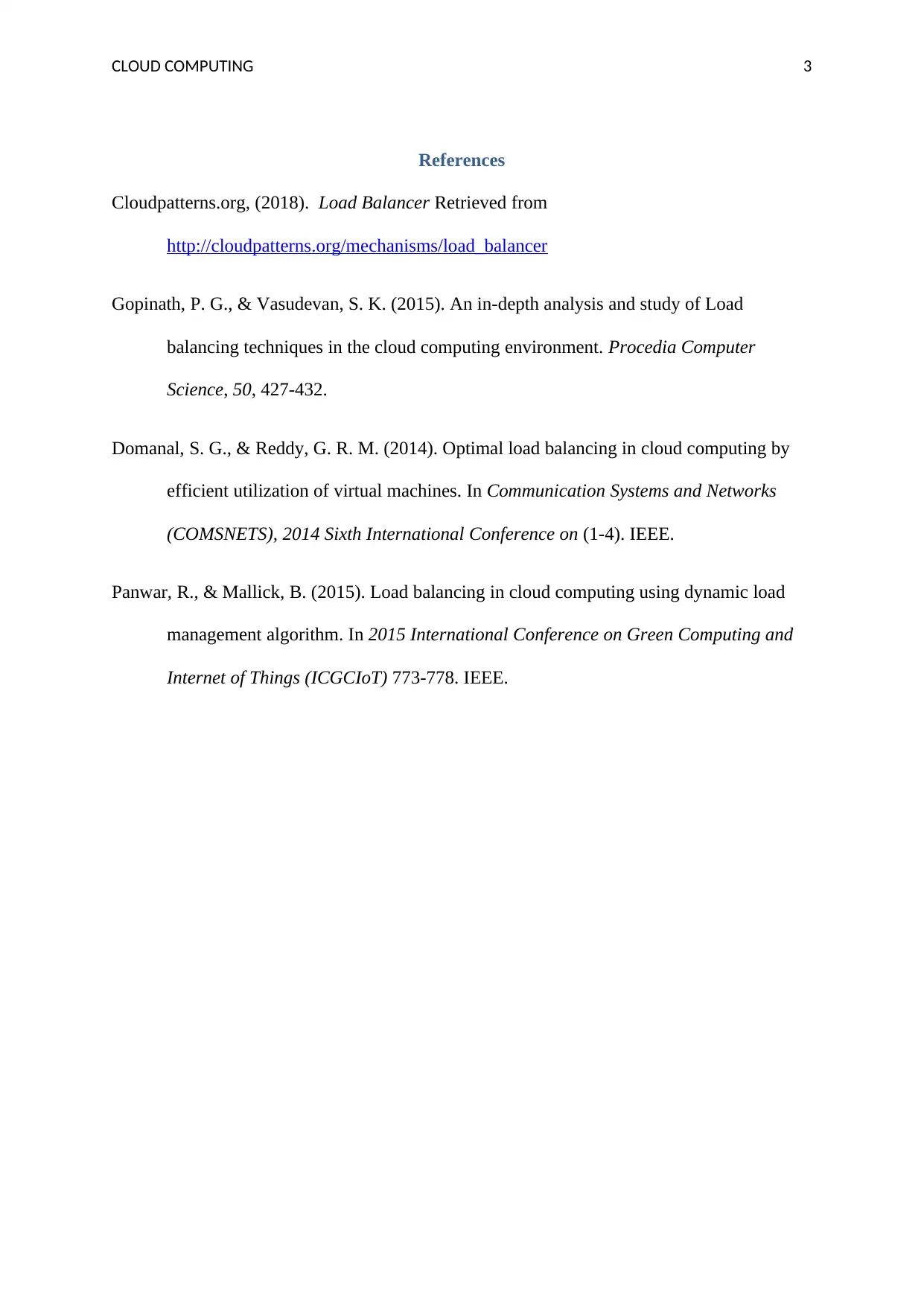Exploring Load Balancing: Functions, Architecture, and Cloud Computing
VerifiedAdded on 2023/06/08
|5
|610
|483
Report
AI Summary
This report provides an overview of load balancing mechanisms in cloud computing, explaining how they efficiently distribute network traffic across server pools. It details the functions of a load balancer, including asymmetric distribution, workload prioritization, and ensuring high availability and reliability. The report also discusses the load balancer's position within the cloud architecture, highlighting its role in horizontal scaling and workload management. The load balancer can operate transparently or as a proxy component, abstracting IT resources to perform the workload effectively. Desklib offers a wealth of study resources, including past papers and solved assignments, to aid students in their academic pursuits.
1 out of 5










![[object Object]](/_next/static/media/star-bottom.7253800d.svg)